Liposuction in Iran procedure and cost
price of liposuction in Iran Tehran starts from $ 1300 at 2022 but if you want a cheaper price with the same quality you can choose shiraz city which liposuction cost starts from $ 800 and the maximum price of liposuction in Iran(Full body liposuction) is around $ 5000.
The liposuction cost in Iran 2022 is at least 250% lower than UK and 220% lower than liposuction cost in the United States.
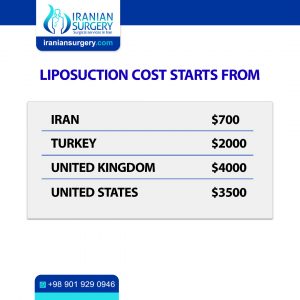
General information about Liposuction in Iran
The following table describes general information about liposuction surgery in Iran including cost of liposuction in Iran, recovery time, and to name but a few.
| General Information | |
| Cost | $1000_5000 |
| Anesthesia | General |
| Hospital Stay | 1 Day |
| Back to Work | 10 Days |
| Duration of Operation | 1-4 Hours |
| Minimum Stay in Iran | 7 Days |
How much does Liposuction Cost in Iran per area?
The average cost of liposuction in Iran (with Best Plastic Surgeons) in 2022 is $ 2500, which includes the cost of Liposuction surgery, hospital and anesthesia, pre op tests, consultation, medication during hospitalization, checkup, follow up and compression garments.
Plan your liposuction in Iran with the Best plastic Surgeon.
Iranian Surgery is a medical tourism company in Iran that cooperates with the best plastic surgeons, specialists and hospitals in Iran and offers world-class treatments at an affordable cost.
Liposuction price in Iran 2022
Procedure | Cost |
Vaser liposuction | $1600_3500 |
Abdominal liposuction | $1500_2500 |
Thighs liposuction | $800_1500 |
Love handles liposuction | $1000_2000 |
Calf liposuction | $800_1500 |
Buttocks liposuction | $1000_2500 |
Neck liposuction | $700 |
Liposuction 3 body areas | $1800_3000 |
Liposuction (5 body areas) | $2200_4000 |
Liposuction + Tummy Tuck | $1500_3000 |
Common Questions about liposuction
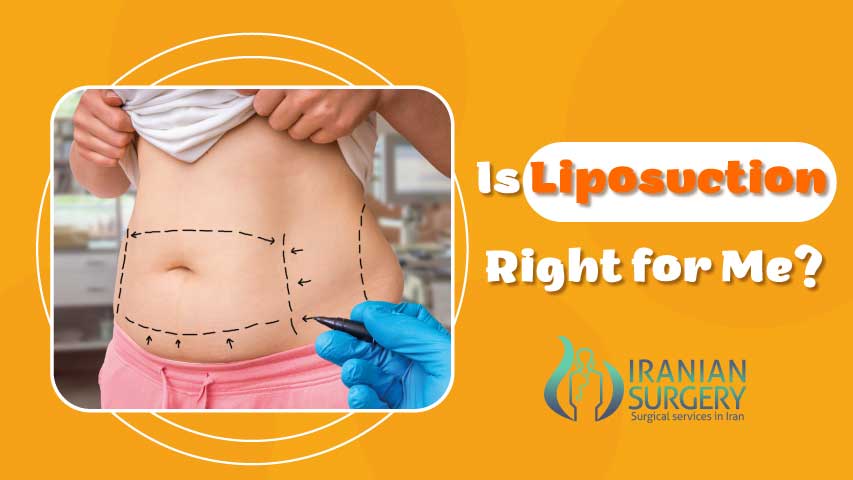
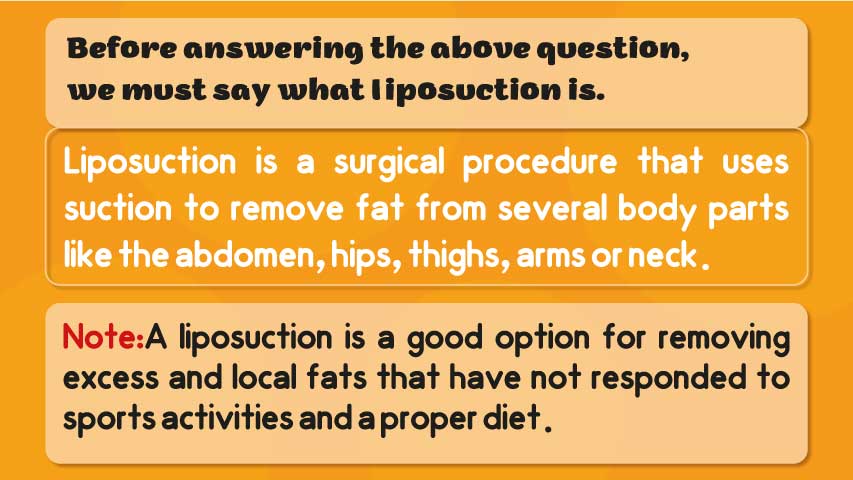
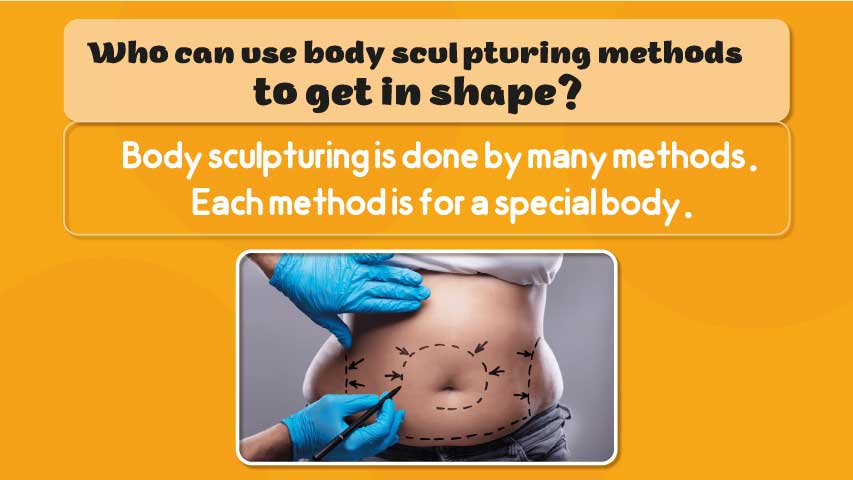
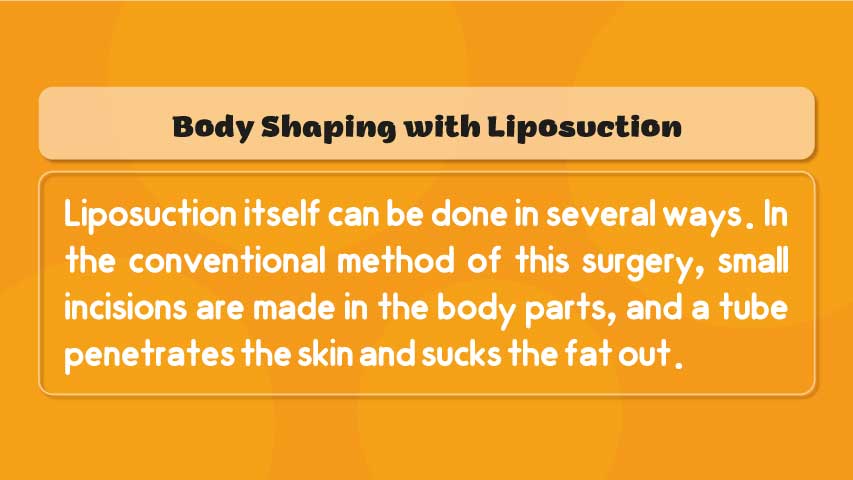
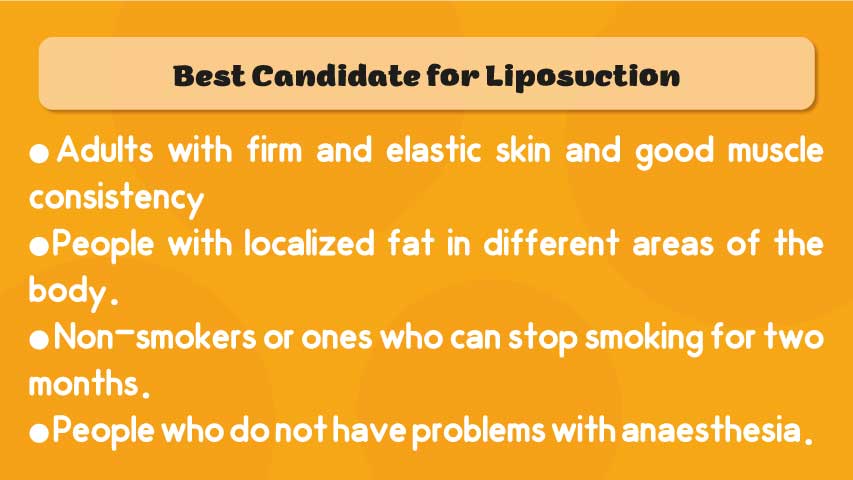

Liposuction surgery in Iran
In Iran, Liposuction is performed at a more affordable price compared to other countries. The price will be determined depending on several factors, including the cost of the doctor, hospital, clinic and the amount of body fat in present in that region of the body.
The cost of liposuction in Iran starts from $700 for each area (depending on the part of your body which needs liposuction). Due to the low cost of accommodation and medical services along with high quality, Iran has managed to earn the top place in the list of the countries that perform this cosmetic procedure.
Liposuction has recently become very popular all around the world, which makes it difficult to make time and appointments for doctors, but the Iranian Surgery team will get you the earliest appointments just to make to whole process easier for you.
You can have your surgery in Tehran and enjoy the pristine natural landscapes in the north of the country, parks, museums and historical sites and reduce your stress and speed up your recovery process. As you know, Tehran is the capital of Iran and for this reason the cost of medical services, accommodation, travel and other expenses is higher than other cities in Iran. That being said, it is also worth mentioning that the number of doctors (who are more experienced) is higher and there is a greater variety of hospitals and clinics too.
On the other hand, you can undergo your cosmetic surgery in the city of Shiraz, which has been the cradle of medical science in Iran since ancient times and has world-class doctors and specialists who are familiar with the tastes of people from different countries. Having pristine and beautiful nature and religious places such as Shah Cheragh, tombs of great poets such as Hafez and Saadi and historical places such as Persepolis will give you a chance of a lifetime to enjoy your trip while using the quality services of our medical staff.
The Iranian Surgery team is always striving to create a memorable and beautiful trip for you by providing you with excellent medical services.
Read more about : Vaser liposuction in Iran
Read more about : Tummy tuck in Iran
Read more about : Lipomatic in Iran
About liposuction procedure in Iran
Undoubtedly, Iran is the most professional country in Asia and one of the leading countries in the world for performing liposuction. Liposuction in Iran is performed in a completely specialized way and under the supervision of the professional doctors and in the most modern hospitals of Iran.
Before performing liposuction in Iran, You will do the necessary tests and then the necessary examinations are performed by an anesthesiologist. Therefore, there is no need to worry about your health condition after liposuction in Iran, because liposuction in Iran is performed by the best cosmetic surgeons and Anesthesiologists in the most specialized medical centers.
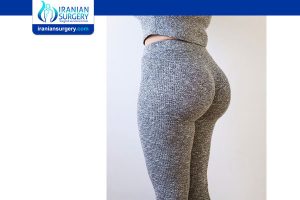
Benefits of Liposuction in Iran
The merits of liposuction in Iran are as follows:
- Experience of Iranian surgeons in plastic surgery
- Affordable cost of liposuction in Iran
- Modern and well-equipped hospitals and clinics
- Low cost of hospital in Iran
- Low accommodation cost in Iran
Read more about : Liposuction success stories in Iran
Read more about : Liposuction before and after
Free Consultation
Read more about : Brazilian butt lift surgery in Iran
Read more about : How much does stomach liposuction cost in Iran?
Dr. Afshan shah
Liposuction surgery consultant
Dr. Afshan Shah is one of the most experienced cosmetic surgeons in Iran. She graduated from Shahed University of Medical Science in 2004.
Dr. Afshan Shah has published numerous medical articles and produced many podcasts, and educational videos. She has mostly performed cosmetic surgeries, including Abdominoplasty (tummy tuck), Liposuction, Lipomatic, BBl, Breast reduction and Breast augmentation, Breast lift and to name but a few.
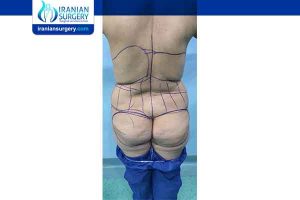
Liposuction Podcast
Read more about : Liposuction Podcast with Dr. Afshan shah
Read more about : Brazilian Butt Lift Podcast with Dr. Afshan shah
Read more about : Abdominoplasty Podcast with Dr. Afshan shah
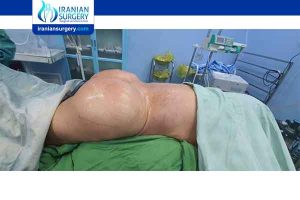
All you should know about liposuction surgery in Iran
What is liposuction?
Liposuction also known as Lipoplasty or Lipo is a surgical procedure that uses a suction technique to remove fat from specific areas of the body, such as the abdomen, hips, thighs, buttocks, arms or neck. Liposuction also shapes (contours) these areas.
In fact, Liposuction is a surgical procedure which removes the exercise and diet resistant stubborn fat from a person’s body and enhances its aesthetic appeal. The doctor puts a small, thin tube through very small cuts in the skin. Then the doctor moves the tube around under your skin to reach areas with more fat.
Liposuction is often combined with other procedures to create a desired shape and is one of the safest and most popular cosmetic procedures.
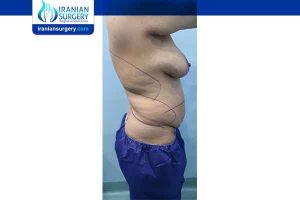
Read more about : Can liposuction and tummy tuck be done together?
Read more about : Liposuction with breast augmentation
Before Liposuction Surgery
When to consider Liposuction
. If you have localized areas of fat deposits that are disproportionate with the rest of your body.
. If you would like more definition or a sleeker contour in certain areas of your body.
. If your skin elasticity is good (Liposuction removes fat, but does not tighten skin).
Read more about: Tummy tuck in Iran
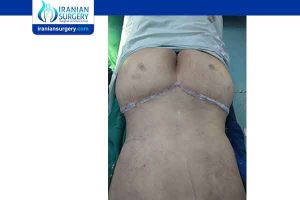
How do I prepare for a liposuction procedure in Iran?
Your surgeon will provide you with preoperative instructions, answer any questions you may have, take a medical detailed medical history and perform a physical exam to determine your fitness for surgery. You may also need to get certain lab tests before your procedure.
Before your liposuction procedure, the surgeon may mark circles and lines on the areas of your body to be treated. Photos also may be taken so that before and after images can be compared.
How your liposuction procedure is done depends on the specific technique that is used. Your surgeon will select the appropriate technique based on your treatment goals, the area of your body to be treated, and whether you have had other liposuction procedures in the past.
In advance of your procedure, your surgeon will ask you to:
. Stop smoking before undergoing surgery to better promote healing.
. Avoid taking aspirin, certain anti-inflammatory drugs and some herbal medications that can cause increased bleeding.
. Regardless of the type of surgery to be performed, hydration is very important before and after surgery for safe recovery.
. If your surgeon recommends weight benchmarks or lifestyle changes, do your best to achieve them to ensure the best results and minimize the chance of complications.
If your procedure requires the removal of only a small amount of fat, the surgery may be done in an office setting. If a large amount of fat will be removed — or if you plan to have other procedures done at the same time — the surgery may take place in a hospital followed by an overnight stay. In either case, arrange for someone to drive you home and stay with you for at least the first night after the procedure.
What can I expect on the day of liposuction surgery in Iran?(In hospital)
Your liposuction surgery may be performed in an accredited hospital, free-standing ambulatory facility or office-based surgical suite. Most lipoplasty procedures take ninety minutes or less to complete but may take longer depending on how much fat is removed and the number of liposuction sites. If multiple sites on both sides of the body are suctioned, the procedure could take over three hours.
. You will receive medications to make you as comfortable as possible during the surgical procedure. Frequently, local anesthesia and intravenous sedation are used for patients undergoing liposuction, although general anesthesia is sometimes desirable.
Read more about : What kind of anesthesia is used for liposuction?
. For your safety during the operation, various monitors are used to check your heart, blood pressure, pulse and the amount of oxygen circulating in your blood.
. Your plastic surgeon will follow the surgical plan discussed with you before surgery. Once the operation has begun, he or she may decide to combine various techniques or change a technique to ensure the best result. It is important that you feel comfortable and trust your doctor to make these decisions.
. After surgery, you will be taken into a recovery area where you will continue to be closely monitored. You will most likely be wearing a compression garment to help “shrink” the skin. Many patients state that the area feels sore, as if they underwent a vigorous workout.
Who is a good candidate for liposuction?
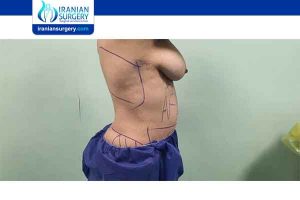
In general, good candidates for a liposuction include:
. You are physically fit, no more than 20 pounds overweight, and your weight is stable. If you are planning to lose a significant amount of weight or even gain weight (for example, due to pregnancy), this is not the time to undergo liposuction.
Read more about : Pregnancy after Liposuction
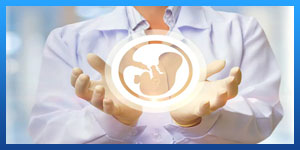
. Healthy individuals who do not have a life-threatening illness or medical conditions that can impair healing.
. Nonsmokers
. Individuals with a positive outlook and specific goals in mind for body contouring
. Individuals with a minimal amount of excess skin and good skin elasticity. Loss of skin elasticity with age can compromise lipoplasty results, but if your skin maintains elasticity, age alone is not a contraindication for liposuction surgery.
. Concentrated pockets of fat that do not respond well to diet and exercise, If you are bothered by excess fat deposits located anywhere on your body that don’t respond to diet or exercise, liposuction may be right for you.
Keep in mind that liposuction does not remove cellulite and cannot tighten loose skin. Your surgeon will be able to recommend other procedures to improve those conditions.
Read more about : Who should avoid undergoing a Liposuction?
What are the Advantages and Disadvantages of Liposuction?
Pros:
. A liposuction procedures results in safe removal of fat and cellulite from the body.
. It gives the person the desired body appearance and size. (Will make your clothes fit better and your body appear slimmer).
. The patient gets the benefit of improved health and prevention of further health related diseases due to excess weight.
. Liposuction is an easy way to sculpt a body part that exercise or diet cannot impact.
Read more about : Body sculpting
. The procedure boosts self-esteem and enhances body image.
. Permanent results. The effects of a liposuction are long lasting.
. Uses small, minimally invasive incisions, which result in smaller scars than open body contouring procedures.
Cons:
. Although liposuction is a popular cosmetic procedure, it is also carried out to treat medical conditions like lipomas (benign fatty tumors), gynecomastia, lymphedema and lipodystrophy syndrome.
. In some situations liposuction might result in damage to the skin in the form of marks, pain, swelling and bruises. However, these are temporary effects and subside early.
Read more about : Loose skin after liposuction thighs
. Results may be affected by weight gain, aging and pregnancy.
. Liposuction is not meant to improve the look of cellulite or loose skin.
. You may need to lose weight to be a better candidate for liposuction.
Risks and Side effects
As with any major surgery, liposuction carries risks, such as bleeding and a reaction to anesthesia. Possible complications specific to liposuction include:
. Contour irregularities. Your skin may appear bumpy, wavy or withered due to uneven fat removal, poor skin elasticity and unusual healing. These changes may be permanent. Damage beneath the skin from the thin tube (cannula) that’s used during liposuction may give the skin a permanent spotted appearance.
. Fluid accumulation. Temporary pockets of fluid (seromas) can form under the skin. This fluid may need to be drained with a needle.
. Numbness. You may feel temporary or permanent numbness in the affected area. Temporary nerve irritation also is possible.
. Infection. Skin infections are rare but possible. A severe skin infection may be life-threatening.
. Internal puncture. Rarely, a cannula that penetrates too deeply may puncture an internal organ. This may require emergency surgical repair.
. Fat embolism. Pieces of loosened fat may break away and become trapped in a blood vessel and gather in the lungs or travel to the brain. A fat embolism is a medical emergency.
. Kidney and heart problems. Shifts in fluid levels as fluids are being injected and suctioned out can cause potentially life-threatening kidney, heart and lung problems.
. Lidocaine toxicity. Lidocaine is an anesthetic often administered with fluids injected during liposuction to help manage pain. Although generally safe, in rare circumstances, lidocaine toxicity can occur, causing serious heart and central nervous system problems.
. Irritation and minor scarring around the incisions are also temporary side effects of the surgery. Avoid rubbing the incisions.
. More serious threats include permanent change in skin colour and damage to nerves and skin. However, these are extremely rare and if a qualified surgeon is chosen to perform the procedure, safe results will follow.
The risk of complications increases if the surgeon is working on larger surfaces of your body or doing multiple procedures during the same operation. Talk to your surgeon about how these risks apply to you.

What is the success rate of liposuction?
The success rate of liposuction in Iran is above 90%. This shows that you have had a great chance to lose weight successfully.
During Liposuction Surgery
How is a liposuction procedure performed?
For the liposuction surgery, very small incisions are made at the place from where the fat is to be removed and then a narrow tube called cannula is inserted into a small incision nearby the targeted area. Next, this tube is attached to a strong vacuum which is drawn back and forth within the excess fat in order to draw it out while keeping the blood vessels and nerves intact.
Some liposuction procedures may require only local anesthesia and intravenous sedation limited to a specific area of your body. Other procedures may require general anesthesia, which induces a temporary state of unconsciousness.
The surgical team will monitor your heart rate, blood pressure and blood oxygen level throughout the procedure. If you are given local anesthesia and feel pain during the procedure, tell your surgeon. The medication or motions may need adjustment.
The procedure may last up to several hours (usually takes between one and four hours), depending on the extent of fat removal.
If you’ve had general anesthesia, you’ll wake in a recovery room. You’ll typically spend at least a few hours in the hospital or clinic so that medical personnel can monitor your recovery. If you’re in a hospital, you may stay overnight to make sure that you’re not dehydrated or in shock from fluid loss.
Read more about: Rippling after liposuction
Type of liposuction surgery in Iran

What are the different types of Liposuction?
. Tumescent liposuction. This is the most common type of liposuction. The surgeon injects a sterile solution — a mixture of salt water, which aids fat removal, an anesthetic (lidocaine) to relieve pain and a drug (epinephrine) that causes the blood vessels to constrict — into the area that’s being treated. The fluid mixture causes the affected area to swell and stiffen.
The surgeon then makes small cuts into your skin and inserts a thin tube called a cannula under your skin. The cannula is connected to a vacuum that suctions fat and fluids from your body. Your body fluid may be replenished through an intravenous (IV) line.
. Ultrasound-assisted liposuction (UAL). This type of liposuction is sometimes used in conjunction with traditional liposuction. During UAL, the surgeon inserts a metal rod that emits ultrasonic energy under your skin. This ruptures the fat-cell walls and breaks down the fat for easier removal.
A new generation of UAL called VASER-assisted liposuction uses a device that may improve skin contouring and reduce the chance of skin injuries. VASER, is an ultrasonic cannula with several grooves that evenly disperse the energy, improving fat disruption and removal.
. Laser-assisted liposuction (LAL). This technique uses high-intensity laser light to break down fat for removal. During LAL, the surgeon inserts a laser fiber through a small incision in the skin and emulsifies fat deposits. The fat is then removed via a cannula.
. Power-assisted liposuction (PAL). This type of liposuction uses a cannula that moves in a rapid back-and-forth motion. This vibration allows the surgeon to pull out tough fat more easily and faster. PAL may sometimes cause less pain and swelling and can allow the surgeon to remove fat with more precision. Your surgeon may select this technique if large volumes of fat need to be removed or if you’ve had a previous liposuction procedure.
. Suction-assisted liposuction (SAL). The most traditional form of liposuction, draws fat out with a vacuum.
After Liposuction Surgery in Iran
Aftercare and Recovery
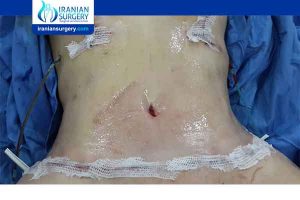
Your surgeon will discuss how long it will be before you can return to your normal level of activity and work. After surgery, you and your caregiver will receive detailed instructions about your post-surgical care, including information about:
. Drains, if they have been placed
. Normal symptoms you will experience
. Any potential signs of complications
Immediately after your liposuction surgery
. The incisions where the doctor inserted the cannula may be leaky or drain fluids for several days. In some cases, the doctor may insert a drainage tube to drain fluid away from the wound.
. You will wear special tight garments to keep your skin compressed. Your doctor will tell you how long to wear these, usually for weeks. Some doctors provide these garments but others will tell you where to purchase them before your surgery.
. When the anesthesia wears off, you may have some pain. If the pain is extreme or long-lasting, contact your physician. You will also have some redness and swelling after the surgery. In some cases, the swelling will remain for weeks or even months. Contact your surgeon to find out if your pain, redness and swelling is normal or a sign of a problem.
Recovery time after liposuction
It is vitally important that you follow all patient care instructions provided by your surgeon. This will include information about wearing compression garments, taking an antibiotic to reduce the risk of infection, if prescribed, and the level of activity that is safe. Your surgeon will also provide detailed instructions about the normal symptoms you will experience and any potential signs of complications. It is important to realize that the amount of time it takes for recovery varies greatly among individuals.
The first two weeks
. The first few days after surgery, you should rest quietly. Elevate the affected body part if possible. Remember, you must not take aspirin or certain anti-inflammatory medications. You will most likely wear a postsurgical garment; if it is too tight, notify your surgeon.
. The first 48 hours after surgery, you will experience varying degrees of swelling and bruising. The swelling is maximal at 48 hours after surgery and mostly disappears within two to three weeks, but there may be slight residual swelling for up to four months. Bruising is normal and typically disappears within seven to ten days.
. Sutures, if placed, are usually removed seven to ten days after liposuction.
. Do not smoke after your liposuction surgery to prevent coughing and bleeding. Do not drink alcohol for five days after surgery or while you are taking pain medication.
. Avoid straining, bending over and lifting during the early post-operative period. In many cases, you will be able to resume most of your normal activities within ten days or less.
. Discomfort after liposuction is generally limited to soreness rather than pain. Pain medications are prescribed to lessen any discomfort during the first few days.
. How long it will be before you are able to return to work will depend on a number of factors, such as the type of job that you do, how much of your body was treated, the area of liposuction and how much of fat is reduced. However, Patients usually are able to return to their work after 7 days, but to be on a safer side, one should take rest for at least 10 days.
. Iranian plastic surgeons highly recommend that you should avoid using airplane until 7 days after liposuction in Iran.
. The patient is required to keep the incisions clean by washing them with soap and water and showering daily.
. Application of ice packs, heating pads and bandages is not allowed on the treated areas during the recovery stages.
Weeks two to six
. It is important to ambulate (walk) as soon as possible after liposuction to discourage swelling and prevent blood clots in the legs. However, avoid strenuous exercise for four to six weeks because it can trigger unnecessary fluid retention in the treated areas.
. You should wait a minimum of six weeks before exposure to sun and heat, including sunbathing, because of the possibility of swelling.
. You will wear a compression garment over the treated areas for four to six weeks to control swelling and promote skin contraction.
Long-term recovery
Since the healing process is gradual, you should expect to wait at least several months to get an accurate picture of the results of your surgery. The small incisions used for access will fade over a number of months, usually becoming barely visible. For six to nine months, you may experience a fluctuating return of ten to 15 percent swelling with exercise or excessive activity. It is important to see your doctor as scheduled. Follow-up visits will continue for several weeks and then after several months at prescribed intervals.
What is the post-operative diet for a Liposuction?
. If the patient has undergone the surgery with local anesthesia, s/he can resume his usual diet almost immediately.
. A well-balanced diet rich in nutrients, proteins and carbohydrates is advised.
. Fruits and vegetables are a must.
. Lessening of sodium or salt in food after the procedure is advised to lessen edema (fluid build-up) in the body.
. It is also important to stay hydrated. Therefore the patient must drink plenty of water and stay off soft drinks.
Read more about: Fat transfer after 5 years
How long will the results last?
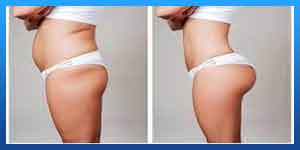
The results of liposuction surgery are technically permanent because fat cells have been removed. However, your body shape and contours might be affected by weight gain, aging, pregnancy, family genes and lifestyle factors.
It is crucial to maintain healthy habits and a stable weight to maintain liposuction results. Following liposuction, if you continue to eat excess calories, fat will no longer be stored in the cells that have been removed, but will be stored in other body areas.
There is no way to predict where your body will store new fat. What’s more, your surgeon will not remove all of the fat cells from your target area, so you could still increase the size of remaining fat cells in that area.
What will my liposuction incisions and scars be like?
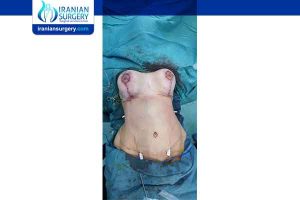
. Because liposuction incisions are small, the scars are also small.
. The amount or degree of scarring depends on the surgeon’s technique and your genetic tendencies.
. Most lipoplasty scars fade and are barely perceptible over time. Visible scars are more likely when large liposuction cannulas are used and in patients who have darkly pigmented skin.
. There are two types of marks that can remain on the skin after liposuction. One is a true scar and the other is known as dyschromia, which is a dark (hyperpigmented) or light (hypopigmented) spot on the skin.
. Generally, the incisions are very small and placed in hidden areas. Sometimes, depending on the area, the incisions cannot be hidden.
How much fat can I lose in a liposuction surgery?
The doctors cannot remove more than five liters, which is roughly equivalent to 11 pounds of fat. Fat, if removed in excess, can lead to serious complications. Liposuction should not be seen as a way of losing weight, but as a way of improving body contour.
Liposuction Surgeons
How can I find the best Liposuction surgeon in Iran?
Liposuction surgeons in Iran can make your body more appealing. Liposuction surgeons in Iran can also help you in making your final decision about what type of Liposuction is more suitable for you.
It is important that you seek the assistance of experienced and skilled Liposuction surgeons in Iran who have provided a suitable condition for people with limited budgets to undergo Liposuction in Iran easily. It is worth explaining that the quality provided by Iranian surgeons is far higher than other countries including Turkey and India.
Liposuction surgeons in Iran, have performed numerous procedures annually which make them more experienced than other countries’ plastic surgeons, due to high demand and low cost of Liposuction in Iran, thousands of people travel to Iran every year to undergo Liposuction in Iran with the best Liposuction surgeons at an affordable and reasonable price.
The factors that the best Liposuction surgeons should have:
- Experience
Because of performing a great number of procedures, they become knowledgeable and highly skilled which make them very famous worldwide.
- Expertise in different types of Liposuction surgery
It is of paramount importance that your surgeon be expert in various types of Liposuction.
We are happy to introduce a great number of Iranian surgeons who have all two above-mentioned features.

Dr. Amir Mousavian
Dr. Amir Mousavian is an experienced board certified cosmetic and thoracic surgeon. With more than 15 years of experience and 5,000 successful surgeries, he is one of the most famous cosmetic surgeons in Iran.
Dr. Amir Mousavian received his specialty degree from Shahid Beheshti University of Medical Sciences in 2010 and then in 2015 he completed his Fellowship in Thoracic Surgery.
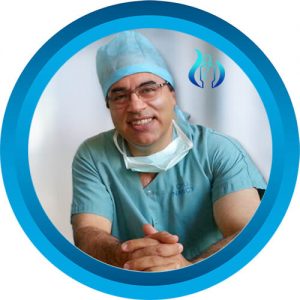
Dr. Vahid Einabadi
Dr. Vahid Einabadi is an experienced board certified cosmetic surgeon in Shiraz. With more than 15 years of experience, he is one of the most experienced surgeons in the field of body and face beauty. After specializing in general surgery at Tehran University of Medical Sciences, he received his scholarship for cosmetic surgery from France and returned to Shiraz after graduation.
He has extensive knowledge and experience in surgeries such as liposuction, lipomatic, abdominoplasty, rhinoplasty, breast augmentation, face and neck surgery, cosmetic ear surgery and eyelid surgery.
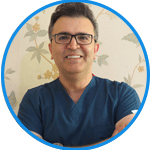
Dr. Seyed Javad Fattahi
Cosmetic Surgeon – breast, abdominal and endocrine surgery specialist- general surgeon.
Dr. Seyed Javad Fattahi is one of the famous cosmetic surgeons in Shiraz with more than 13 years of experience and 2,000 successful surgeries. He is one of the well-known cosmetic surgeons in Shiraz.
Honors:
. Obtaining a Specialty board in breast and abdominal surgeries
. Member of the Association of Pioneer Surgeons of Iran
Plastic surgery hospitals in Iran
Tehran hospitals
- Moheb Kosar Hospital
- Imam Khomeini Hospital
- Ebnesina Hospital
- Parsian Hospital
- Pasteurno Hospital
- Kasra Hospital
- Treata Hospital
Shiraz hospitals
- Mirhoseini Hospital
- Ordibehesht Hospital
- Mir Hospital
- MRI hospital
- Dena Hospital
- Abualisina Hospital
- Ghadir Mother and Child Hospital
Mashhad hospitals
- Imam Reza Hospital
- Mehregan Hospital
- Hashemi Nezhad Hospital
- Farabi Hospital
- Mehr Hospital
- Sina Hospital
- Bentolhoda Hospital
Factors affecting the cost of liposuction in Iran
There are many factors that determine the overall liposuction cost, including:
- The surgeon’s skill: The most skilled and best liposuction surgeons are in high demand.
- The type of liposuction surgery: Complicated procedures take longer time and therefore their cost is more.
- Geographical location: the cost liposuction surgery is varied according to geographical location.
4. Which part of your body aims to get liposuction?
The abdomen is one of the most common areas for liposuction. However, this can encompass multiple areas of the body. So even when a surgeon is doing just one area, there might be a number of smaller procedures making up the greater whole.
5. How much fat do you want to remove?
Your overall size and the size of the mass you want to remove are other main factors which affect the final liposuction cost.
Liposuction in different cities of Iran
Liposuction cost in Shiraz, Iran
How much is liposuction in Shiraz?
The average cost of liposuction in Shiraz is around $1800 in the year 2021.
Liposuction cost in Tehran Iran
How much is liposuction in Tehran?
The liposuction cost in Tehran can be varied between $1500 and $3000. As mentioned earlier, this may vary from doctor-to-doctor and from clinic-to-clinic.
Liposuction cost Iran Mashhad
How much is liposuction in Mashhad?
The average liposuction cost in Mashhad Iran is around $1800_$3500
Liposuction cost in Iran VS. Liposuction cost in other countries
Liposuction in Iran is a type of cosmetic and plastic surgery which helps slim down specific areas of the body by removing extra fatty deposits.
It targets disproportionate contours. It also helps in improving the body proportions.
The liposuction cost in Iran is at least 190% lower than UK liposuction cost and 170% lower than liposuction cost in the United States.
Iran is one of the best countries for liposuction and it is interesting that in the year 2020 Iran, India and The U.S were among the countries that had the greatest rate of liposuction surgery. However, liposuction cost in Iran was lowest compared to other countries.
Annually, thousands of people form each corner of the world travel to Iran to have liposuction in Iran namely the UK, Canada, Australia, the U.S and to name but a few. Iran’s Liposuction clinics and hospitals are equipped with advanced liposuction facilities. Iranian hospitals offer high quality surgical services which are completely equal to the services in the U.S and Europe countries, so you can have a safe liposuction in Iran.


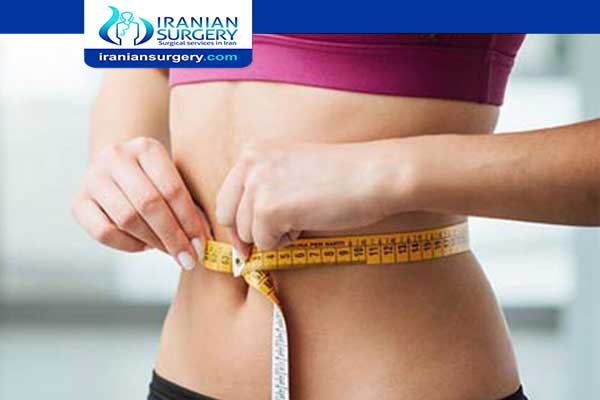

76 Comments
Does fat return after liposuction?
Hello
I do liposuction 2 years ago in turkey
I was not satisfied from the result
I want to do liposuction again
can you get information about the cost of full lipo in Iran?
Thank you
please tel me how can i find plastic surgeon in iran?
Absolutely. liposuction was developed specifically for revision liposuction. liposuction in iran is highly effective at correcting unsatisfactory outcomes of previous body contouring surgeries. However, you must be evaluated by one of our surgeons in order to assess whether or not you are a candidate.
please send your photo and medical ducument in what’s app
00989338460186
thank you.
HOW MUCH fat can be loosed with liposuction surgery?
The maximum amount of fat that can be removed safely is probably about 6 to 8 pounds (3 to 4 liters). The greater the volume of fat removed on a single day the greater the risk of serious complications. If a patient requires removal of more than 6 to 8 pounds of fat, it is safest to divide the liposuction into separate surgical procedures each separated by 3 to 4 weeks.
12 things you should know about liposuction
what’s diffrent between abdominoplasty and lipo?
thanks
what’s diffrent between abdominoplasty and lipo
There are several treatments out there for fat removal, and they may be confusing for people who are unfamiliar with them. Two such treatments that are similar in some ways, but different in several others, are tummy tucks and liposuction.
Why They’re Done
A tummy tuck, also known as an abdominoplasty, is designed to improve the appearance of the abdomen by removing excess skin. Benefits of the tummy tuck include:
Removing loose skin or fat
Tightening a weak fascia (the connective tissue in the abdomen)
Removing stretch marks and excess skin below the belly button
Tummy tucks are often used by women who have had a C-section, and they can be combined with other body contouring cosmetic procedures. However, if you are planning to lose a large amount of weight, considering future pregnancy, or have a body mass index (BMI) over 30 or a severe chronic condition, your doctor might advise against a tummy tuck.
Liposuction can treat a larger variety of areas, including:
Thighs
Hips and buttocks
Abdomen and waist
Upper arms
Back
Inner knee
Chest area
Cheeks, chin and neck
Calves and ankles
Liposuction helps slim and reshape these areas by removing excess fat deposits and improving body contours and proportions. It’s excellent for treating large areas in a single procedure, and its results are more consistent and predictable than noninvasive treatments. Liposuction is not a substitute for proper diet or exercise, nor is it an effective treatment for cellulite or loose, saggy skin.
Procedure Differences
Both of these treatments are usually performed under general anesthesia. During a tummy tuck, the procedure will go as follows:
You’ll be given anesthesia.
Your surgeon will make incisions to remove most of the skin and fat between your bellybutton and pubic hair in an oval shape.
The fascia will be tightened with permanent structures.
Your surgeon will reposition the skin around your bellybutton. The bellybutton will be brought out through a small incision and sutured in its normal position.
The incision will be stitched together, leaving a scar that falls along a natural bikini line crease.
You may be given an antibiotic to prevent infection, and the process will take about three hours.
Liposuction also follows simple steps:
You’ll be given anesthesia.
Small incisions will be made, then a thin, hollow tube will be inserted through the incisions to loosen fat using a controlled back-and-forth motion.
All dislodged fat is then suctioned out of the body using a surgical vacuum or syringe attached to the tube.
Once swelling and fluid retention wear down, you’ll be able to see full results of liposuction.
Risks
Risks of tummy tucks include:
Fluid accumulation beneath the skin
Poor wound healing – antibiotics can be given to prevent this
Scarring – this is placed along a bikini line, which is easy to hide. Scarring will vary from person to person
Tissue necrosis – when fatty tissue deep within the skin in the abdominal area is damaged or dies. Smoking increases risk of tissue necrosis, which might heal on its own or might require a touch-up surgical procedure
Changes in skin sensation – certain reduced sensations or numbness that usually diminishes in the months following the procedure
Risks of liposuction include:
General risks associated with anesthesia
Bruising
Changes in skin sensation
Damage to structures like nerves, blood vessels, muscles, lungs and organs
Deep vein thrombosis
Fluid accumulation
Infection
Irregular contours
Irregular pigmentation
Need for revision surgery
Persistent swelling
Poor wound healing
Rippling or loose skin, worsening of cellulite
Swelling
Thermal burn or heat injury from ultrasound techniques
Results
Tummy tucks can give your abdomen a more toned and tight appearance. They also have lasting results, as long as a you keep a stable weight.
Despite some lost natural firmness, liposuction is relatively permanent as long you maintain a healthy weight and fitness level. There may be situations where multiple procedures are necessary.
If you’re considering a tummy tuck or liposuction, talk with your plastic surgeon. He or she will recommend the proper procedures for you.
hello
My weight is 113 kg and I have to do knee replacement next year.
My doctor says you should lower your weight by 30 kg. ?????
I wanted to know how much weight I can loose with abdominoplasty?
maximum extraction limit of 5,000 milliliters of fat (11 pounds) for all people.
We will never recommend tummy tuck(abdominoplasty) before knee replacement, be sure to consult your doctor. The best way to lose weight for you is to get the right diet.
i heard about new way to remove fat is called lipomatic?
does it have less side effect than liposuction?
hello maria
Lipomatic (liposuction with lipomatic device)
lipomatic means slimming, filling and reshaping specific areas of the body by removing excess fat deposits or transferring to desired areas. There are several types techniques aiming liposclupting. Recently invented Nutational Infrasonic Liposclupture (lipomatic device) System developed for solving several problems related to prior techniques using surgical incisions to remove excess fat tissue resulting in prolonged operation time, need of general anesthesia, more tissue damage, bleeding during surgery, higher complication rate, prolonged healing period and scarring. plastic surgeon does this application with a device named Lipomatic and he gets better results.
Advantages
No scar
Natural results
No fluctuations or bumps
Shorter healing period
Performed under local anesthesia
Simple and safe
Shortened operation time
What is liposuction With Lipomatic device?
Liposculpture is frequently confused with liposuction, but it’s a different operation in terms of the technique which focuses on correcting the contour.
Considered as a weight loss method by most women, this application only provides correction in the problematic areas.
While liposuction’s word meaning is a fat intake process, the word meaning of liposculpture is removing the fatty tissue to fix and aesthetically reshape the area.
plastic surgeon performs Liposculpture applications with the Lipomatic device. This takes the operation to another level. During the Lipomatic, fat is removed from different parts of the body like back, waist, belly, legs, hips, knees, or under the chin with a vacuum and then the body is reshaped.
It can be applied separately or during breast reduction or augmentation,tummy tuck or similar plastic surgeries. Liposculpture is not a cure for obesity.
If you genetically suffer from regional lipodiosis even though you exercise regularly and consume low calorie foods, it is beneficial for you to get this operation. It is especially effective in difficult and large areas like the abdomen, buttocks, back, upper arms, thighs and knees and in such areas superior to the Laser Lypolysis System which is designed to be applied in gentler parts of the body. In Liposculpture technique, a cannula having fluctuation, rotation, and vibration movements creating ultrasonic waves allows removing fat tissue gently and safe without harming any other tissues. The vibrations and ultrasound waves of the device release stem cells adhered to fat cells.
Released stem cells help with the healing process and results with natural and fresher look. Liposculpture doesn’t require large incisions on the skin but very small entering hole for the cannula as a result, it is almost impossible to notice the scar. Compared with surgical techniques, as there are no incisions during surgery, there are no fluctuations or bumps on skin after the procedure providing a smoother look. Additionally, most recent simple and safe technique Liposculpture is done under local anesthesia in most application areas so that the patient can return normal activities the next day.
Who can get Liposcupture With Lipomatic?
If you have a fat accumulation in some specific parts of your body and you cannot get rid of this problem with diet and exercises, you may be a good candidate for liposculpture.
Examination of Liposcupture With Lipomatic
Also surgeon answers your questions about the liposculpture operation and mentions the methods he is going to use. Regional lipoidosis and other problematic areas are examined. Your photographs are taken for medical archive and the necessary areas are measured.
Application of Lipomatic
Liposculpture eliminates many side effects due to its advantages. Intense vibration provides much more fat removal in a single session and minimizes the post-application pain. Before liposclupture, saline solution is injected into pre-selected the fat cells with Tumescent method under local anesthesia. This reduces the bruising and swelling after the operation. Durable fat deposits are extracted with tubes and vacuums and the area is shaped.
After Liposcupture With Lipomatic
Patients can leave the hospital a couple of hours after the process and they can take bath after 24 hours. Less bruising and swelling is observed due to the methods used by lipomatic. It may take a couple of weeks for the swellings to go down. Your body gets used to its new contour and you regain your form each day. If you watch your weight and live a healthy life, Liposculpture will help you to stay fit for the rest of your life. Stabilizing your weight, exercising and changing your lifestyle is the most important thing.
lipomatic side effects
Lipomatic surgery or Liposuction is a type of cosmetic surgery often used on the abdomen, thighs, buttocks, neck, chin, upper and backs of the arms, calves, and back.The risk of complications is usually associated with how large the procedure is, as well as the surgeon’s skills and specific training.The following risks, unpleasant side effects, or complications are possible:Severe bruising: This can last for several weeks.Inflammation: The swelling may take up to 6 months to settle, and fluid may continue to ooze from the incisions.Thrombophlebitis: A blood clot forms in a vein, causing inflammation and further complications.Contour irregularities: If there is poor skin elasticity, if the wound heals in an unusual way, or if fat removal has been uneven, the skin may appear withered, wavy, or bumpy.Numbness: The affected area may feel numb for a while, but this is usually temporary.Infections: Rarely, a skin infection may occur after liposuction surgery. Sometimes this needs to be treated surgically, with the risk of scarring.Internal organ punctures: This is very rare.Death: Anesthesia involves a small risk of death.Kidney or heart problems: As fluids are being injected and or suctioned, the change in the body’s fluid levels may cause kidney or heart problems.Pulmonary embolism: Fat gets into the blood vessels and travels to the lungs, blocking the circulation in the lungs. This can be life-threatening.Pulmonary edema: Sometimes, when fluid is injected into the body, it accumulates in the lungs.Allergic reaction: The patient may be allergic to medications or materials used during surgery.Skin burns: The cannula movement may cause friction burns to the skin or nerves.Those who are most satisfied with the results tend to be the people who consider carefully the pros and cons beforehand, who are informed about what to expect, who choose a qualified and experienced surgeon, and who discuss the details carefully with their surgeon.
There are hundreds of measures to cut down weight, but when it comes to eliminating the fats from the various parts of the body, there is only one treatment that is Liposuction . It is a surgical treatment that removes the fat without creating any recovery issues or side effects as well.
hello
“reality is liposuction is incredibly safe. But obviously if you set out to take [more than 10 pounds] of fat from a person who weighs 130 pounds, versus someone who is 230, you’re looking at a very different situation. So i think that the notion of a sliding scale based on BMI makes a lot of sense.”
For the study, the investigators tracked more than 4,500 liposuction patients. None of the patients died following fat extraction, and the total complication rate was less than 1.5 percent. Most of the complications weren’t considered serious, the researchers said.
however the first way for loosing weight is a diet .
Vaser liposuction is a procedure which is used to change the contours and shape of the body by removing persistent fat deposits. Vaser stands for Vibration Amplification of Sound Energy at Resonance. It is a specialised ultrasound technology used to break down fat cells by sending out ultrasonic frequency waves. Once the fat cells have been broken down, the cosmetic surgeon is able to remove excess fat through a suction process (the liposuction part of the procedure). The ultrasound technology used during a vaser liposuction procedure comes with certain benefits, compared to traditional liposuction procedures.
hello iran health tourism
what type of liposuction performed in iran?
thanks
Tumescent liposuction. This is the most common type of liposuction. …
Ultrasound-assisted liposuction (UAL). This type of liposuction is sometimes used in conjunction with traditional liposuction. …
Laser-assisted liposuction (LAL). …
Power-assisted liposuction (PAL).
Hi
Was wondering if anyone could tell me about their experiences with iran health tourism and point me out to some good doctors to go and see in iran (well priced of course) to talk about liposuction cost for me would be?
Right now I am compleatly in the dark in terms of costs involved and the kinds of results I should expect. So any information would be great
Thankyou very much
Hi iran health tourism,
this is my experience
I may not know the exact reason you are considering liposuction but pls read up more before you decide, not just about the cost.
If you are not overweight but just wan to improve body shape, there are better way and options to do.
If u are really obese, liposuction would not give u the long term solution, because it does not reduce your visceral fats that brings the health risk & study has shown that visceral fats is directly associated with weight rebounce.
hello
Can i get a tummy tuck and liposuction at the same time?
hello gary
You asked a hard question!!!!!!
The short answer is “Yes” and “No.”
Yes:
You can get liposuction of other areas such as the love-handles, thighs, or chest at the same time as a tummy-tuck. Plastic surgeons respect the total volume that can be removed in a typical outpatient setting (approximately 5 liters or 10 pounds of lipo fat). It may be safer to remove less fat if multiple other procedures are being done in addition to liposuction.
No:
you shouldn’t get liposuction of the abdomen and a tummy-tuck at the same time. Typically, it is recommended to avoid liposuction of the abdomen itself at the same time as an abdominoplasty (tummy-tuck) because the skin has trouble healing with the “double-hit” of a tummy-tuck and lipo of the same area. You can get liposuction of the abdomen at the same time if a mini-tummy tuck is being done, and that is a very popular combination in our practice.
I hope this information will be useful for you
Hi iranian surgery
i am looking at getting liposuction over in tehran iran for about 6 or 7 months,
I’ve done lots of research abour liposuction and tummy tuck in tehran iran, and i can not found a surgeon with a fair amount of good reviews.
after that I’ve also got a consultation on the 3rd of November at kasra hospital, I chose this hospital because it’s close to our hotel, however can’t find any information on any of the plastic surgeons they’ve recommended.
doe anyone know how much liposuction price in tehran iran?
the surgery I want done is Liposuction and tummy tuck, areas I want done are;
-thighs
-love handles
-stomach
-upper arms
I want to know if anyone has any recommendations as far as hospitals, surgeons for this procedure, any post surgery woes, or helpful hints. I’d ideally like to keep posting to share my experience with everyone, and those that are in the same position as me!
hello jeff
There are many hospital and plastic surgeons in tehran that perform liposuction surgery and tummy tuck .
for exmaple kasra hospital,pastorno hospital,gabndi hospitan and etc,
The liposuction cost in iran tehran start from $800 and depends on depends on that how much fat do want to lose?
Dose liposuction cost in iran less than liposuction in india delhi?
The cost of liposuction in India start $ 2,500 and comes to $8000 , but The lowest cost for liposuction in Iran is about $ 800, and the highest cost of liposuction in Iran is $ 4,500. When determining the cost of liposuction, there are many considerations to take liposuction in india. These include:
1.The body part involved
2.Single / Multiple body parts are operated on.
3.Body type
4.The procedure used
5.The doctor
6.The geographic area
7.Hospital chosen.
but factors of determining the cost of liposuction in iran may include:
1.Anesthesia fees
2.Hospital or surgical facility costs and clinic
3.Medical tests before liposuction surgery
4.Post-surgery garments
5.The amount of fat evacuated from the body
6.Number of liposuction surgery sessions
7.Prescriptions for medication
9.Surgeon’s fee
9.The cost of traveling to Iran
10.The duration of the patient’s presence in Iran.
Liposuction must be completed by a guaranteed plastic specialist and requires a lot of ability and mastery. Accordingly, the cost of liposuction frequently extends. There are a few nations(iran,india,mexico) where liposuction costs almost half as compared to the rest of the world with no distinction in the standard of treatment.
in general iran is the cheapest for the liposuction surgery in the world with same standard of treatment.
Has anyone tried fat grafting under the eyes? Does it work?
Hi, thank you for this question, Fat grafting to the area of the lower eyelids does work if done correctly. It can also be permanent. Caution must be exercised to avoid over filling, and to avoid serious complications such as loss of vision.
and this is one of the most consistently asked questions in our practice. Unlike fillers, fat is a living cell-adipocytes. When we remove fat from one part of the body, we are cutting off the circulation to these cells and they will die unless they receive new blood supply. When we place these fat to a new place, we are expecting new source of blood supply to grow. Once they do, the fat cells will survive and they will last for a very long time. So it is crucial that the techniques used to harvest fat, purification, and placement of fat in the new location all increase the possibility of fat survival. When these techniques are used, fat grafting is very consistent a wonderful method to volumize with a natural and long lasting result.
Is liposuction surgery reversible?
Unfortunately the answer of your question is yes, The return of fat in the liposuction technique is very dangerous
Because if the fat returns it will accumulate around the heart and liver, and the chance of a stroke increases. In order to prevent this return, one needs to have a proper diet, often with doing regular sport.
how much does liposuction cost in iran?does liposuction cost in iran less than india?
yes .in general,liposuctio cost and lipomatic cost in iran less than india.
The cost of your liposuction surgery and lipomatic surgery in iran depends on the treated area. If lipo is done in combination with other procedures like a tummy tuck, breast augmentation, arm lift, the costs can vary widely. The price in the iran start from $800(per area) .
how much does liposuction cost in tehran?
The cheapest cost of liposuction in iran tehran start from $1000.
Liposuction costs and tummy tuck cost in iran can widely vary. The average fee referenced above is only part of the total cost – it does not include anesthesia, operating room facilities or other connected expenses.
A surgeon’s fee for liposuction in iran tehran is according to their experience, the type of procedure used .
besides appearance Is liposuction good for health?
Liposuction surgery in iran is mainly used to improve appearance, rather than providing any physical health benefits. … It can treat areas of fat that are resistant to exercise and diet. When an individual gains weight, each fat cell increases in size and volume.Liposuction reduces the number of fat cells in isolated areas
HI IM FROM PAKISTAN NEED TO KNOW THAT How much liposuction cost?
The price of liposuction will depend on the areas to be treated and starts from $800, The liposuction cost in iran includes the fees of the Plastic Surgeon and his or her team, as well as those of the anaesthetist, the cost of the operating room, the hospitalization time and the post-operative follow-up.
What is the MAXIMUM age for liposuction?
Age is not an obstacle to performing a liposuction, the minimum age would be the age of majority but there is no maximum age. The important thing is that the patient has good health and good skin quality. In the preoperative consultation we determine if the patient is a good candidate and what results we can obtain with this intervention.
What parts of the body can be liposuctioned?
Keep in mind that liposuction is not a substitute for diet and exercise. In many cases the thighs, lumbar and back are liposuctioned but this surgery can also be done on the hip, face, abdomen, neck, legs and arms.
I need to know that do plastic surgeons do liposuction?
Liposuction is a cosmetic procedure that removes fat that you can’t seem to get rid of through diet and exercise. A plastic or dermatologic surgeon usually does the procedure on your hips, belly, thighs, buttocks, back, arms, or face to improve their shape.
Can u explain that What is a mini arm lift?
A mini arm lift is a body contouring procedure that creates a sleeker arm. The procedure re-sculpts arm tissue and removes loose or saggy excess skin. Mini arm lifts are one of the most common procedures our NYC patients seek.
hey im planing to come to Tehran to do face lift and nick lift also ibrow lif please include i have some extra skin on my under eyes if i could remove that can u tell me how much price for all these treatment will be because im searching in Tehran lots doctor and all different price and review some of them really scary please could u advise me or show me any good doctor
Before taking any action, those who have a risk factor (like you) are examined by a specialist physician and lipolysis is performed after their approval.
Hello Andrey
I had a fat transfer under my eyes for dark circles back in 2014 because I thought it was the best facial rejuvenation option. There are some great positives but you really need to see a great plastic surgeon otherwise they may overfill and make you look puffy.
When I had mine done the surgeon told me that the hollowness underneath my eyes was casting a shadow so I constantly had dark circles. He suggested the fat transfer to help boost that hollowness and it definitely worked for me.
He pulled fat from my stomach as there is so much of it there and put a little under my eyes while I was under anesthesia. I didn’t feel anything during the procedure and was kind of out of it from painkillers the next day. But when I finally came to I was surprised by the amount of bruising and swelling on my face.
My face was incredibly swollen for probably a week and a half because it is such a sensitive area and I had huge chipmunk cheekbones. Everything felt bruised and I kept using my prescription and an over the counter pain medication for about two weeks.
However, I eventually healed and still don’t have as much darkness under my eyes. I was really happy with my choice but I had a friend who saw another surgeon for the same procedure. They drastically overfilled their under eye and now their face looks swollen all the time.
So, it’s a good choice with a great surgeon but only if you can afford the better doctors. Fat grafting to the under eyes was a perfect procedure for me because I was not ready to have invasive plastic surgery like a facelift to rejuvenate my face. I am only 45 so I will potentially look into invasive surgery when I am a bit older.
Why is Liposuction Slimming Suitable for People?
do you mean that what kinds of people are ideal candidates for doing this surgery? if so, then your answer is:
Generally, people who are less overweight and have smoother skin and have no neurological, cardiovascular, or other problems are ideal candidates for liposuction slimming.
Could u tell me about different types of liposuction thanks
There are three types of liposuction, including suction-assisted liposuction (SAL), ultrasound-assisted liposuction (UAL), and inflatable liposuction. SAL is the same type of traditional liposuction that is removed using suction and extra fat. At UAL, fats are melted using the ultrasonic energy generated at the tip of a special tube. In an inflamed procedure, the surgical part of the body becomes numb.
How do I know if I need a neck liposuction or a facelift or both?
Patients often use neck liposuction in Iran alone. Under the chin liposuction in iran is usually used in younger people whose skin has good elasticity and very little extra skin. Facelift in Iran is used to treat drooping and sagging skin. Skin straightening techniques are used to eliminate wrinkles and superficial skin disorders. The best results are when we do facelift and smooth skin together so we can remove fat and treat extra wrinkles and skin at the same time. One of the characteristics of a good surgeon in iran is to tell the truth and get the patient out of the dream.
Im planning to have liposuction next week in iran,What are the negative effects of liposuction?
Hi .
Laser lipo I know to some extent!
But I don’t know its good or its disadvantages to ultrasonic suctioning or its difference with suctioning?
For a relatively low fat volume in the abdomen and abdomen / Which option is less risky and effective? And is it worth it? Or for ultrasonic I have to say 1 month! 24 hours a day and 3 months daily. For ultrasonic suctioning, I don’t know if I heard the definition of a rural doctor or not.
hello these days one of the safest methods for removing stubborn fat deposits is Vaser liposuction which is new amd less risky.Besides,Vaser liposuction in Iran, also known as Lipo Vaser, is an alternative to the traditional liposuction and lipomatic. so I recommend you doing this. to know more about this surgery please visit our website, vaser liposuction in Iran section.
Vaser liposuction in Iran is a procedure which is used to change the contours and shape of the body by removing persistent fat deposits. Vaser stands for Vibration Amplification of Sound Energy at Resonance. It is a specialized ultrasound technology used to break down fat cells by sending out ultrasonic frequency waves. Once the fat cells have been broken down, the cosmetic surgeon is able to remove excess fat through a suction process (the liposuction part of the procedure). The ultrasound technology used during a vaser liposuction procedure comes with certain benefits, compared to traditional liposuction procedures.
One of the major benefits of vaser liposuction compared to traditional liposuction methods, is the minimal amount of damage to surrounding tissues. Fat cells removed during a vaser liposuction are specifically targeted which allows the surgeon to provide the patient with a smoother and a more sculpted end result. During the procedure, the surgeon is able to highlight and define certain muscles, which give the patient a more noticeable result. The procedure can also tighten the skin and target cellulite, since a combination of ultrasound and laser techniques can be implemented during the procedure.
I would like to undergo Vaser liposuction in iran, could you please give an average of the price of it in Iran,is it more expensive than liposuction ? knowing I need it for 3 areas in my body
Thank you
hello sanni, first of all I need to see your body photos and know about your BMI and then I’ll consult your case with some surgeons and let you know whether vaser liposuction is the best treatment option for you or not. besides, I want to know In what areas of your body do you plan to have surgery?
the cost of vaser liposuction varies city to city so, let me know Which city are you comfortable with to be visited by our doctors? and then I can provide you with more accurate information. This is my whatApp number: +989019290946. Thank you
After much research I decide to do vaser liposuction in iran.
How much does it cost?
hello Rahman, the cost of vaser liposuction varies city to city and depends on many factors such as the amount of fat you want to remove from your body, surgeon’s fee etc. so would you please take some photos of your abdomen and send them to my whatsAPP number, besides, please let me know which city are you planning to do your surgery. this is my whatsApp number +98 9019290946. thank you
Is VASER Liposuction Procedure Safer than Regular Liposuction?
hello Emily, yes it is safer because This is a newer method, for more information please read Vaser liposuction in Iran. Thank you
Hello,thank you for your useful content.I am sarah from Australia.I want to get rid of hip dip and change whole of my body,Is liposuction allowed for under 18?
Great majority of cosmetic surgeons will recommend that liposuction patients be at least 18 years old to undergo the procedure; however, there are special instances in which younger people are considered for the liposuction and it will depend on the surgeon and the teen’s individual circumstances. It’s important for you to know that teenage bodies are still developing and undergoing many changes including changes in weight and body shape. Many of these changes are completely natural and healthy so liposuction should likely be postponed as an option until the body is done fully developing and growing.
it is important to consult with the best doctors which tell you the best for you , for example one of the best doctors in Shiraz is doctor Einabadi, who’s the specialist in Shiraz.
Hi, I’m Linda from Norway my weight is 170 lbs. I’m planning to come to Iran for liposuction surgery. How can fat grow back after liposuction?
hello dear Linda, the fat is usually back by one year, However, it does not return to the spot that has been operated on. “The fat comes back in different places. The areas that had liposuction did not regain fat, these areas somehow prevent fat from returning there. For more information about liposuction in Iran please contact us via whatsApp number +9019290946. thank you
I would like to undergo liposuction in Iran,I want to know where is liposuction be performed?
hello dear Jason, Liposuction in Iran is performed in well-equipped hospitals, to provide you with detailed information, please contact us via whatsApp . this is our whatsApp number +989019290946.thank you
Hello.
I’m Anna, 18-year-old, what makes me an ideal candidate for the procedure?
Good candidates for Liposuction should have following items.
You should have a good weight and not planing to gain or loose a lot of weight as this won’t be the time for it. your Body BMI matters as does your age. After that Your medical history. you should always tell your doctors everything.
for faster recovery you shouldn’t smoke or do anything that can harm your body.
after that there will be the elasticity of your body. the more elasticity the better.
In general, good candidates for a liposuction include:
. You are physically fit, no more than 20 pounds overweight, and your weight is stable. If you are planning to lose a significant amount of weight or even gain weight (for example, due to pregnancy), this is not the time to undergo liposuction.
. Healthy individuals who do not have a life-threatening illness or medical conditions that can impair healing.
. Nonsmokers
. Individuals with a positive outlook and specific goals in mind for body contouring
. Individuals with a minimal amount of excess skin and good skin elasticity. Loss of skin elasticity with age can compromise lipoplasty results, but if your skin maintains elasticity, age alone is not a contraindication for liposuction surgery.
. Concentrated pockets of fat that do not respond well to diet and exercise, If you are bothered by excess fat deposits located anywhere on your body that don’t respond to diet or exercise, liposuction may be right for you.
Keep in mind that liposuction does not remove cellulite and cannot tighten loose skin. Your surgeon will be able to recommend other procedures to improve those conditions.
How much does one session of liposuction cost in Iran?
The cost of a Liposuction session in Iran is between 1000$ to 4500$ depending on the area of the body that requires treatment.
Arm Liposuction 1000$
Double Chin Liposuction 700$
Abdominal Liposuction 2000$
Abdomen and Hips 2500$ to 3000$
thigh Liposuction 1500$ to 2000$
Breast Reduction 1500$
hello I’m a malek 23 years old with 135 kg weight and 5’10 height and I’m. interested in doing a mega liposuction.
please explain what I need to do.
hello Malek, you have a BMI of 42 and Liposuction will be dangerous for you
we would suggest you do a gastric sleeve first and later you consider liposuction
for more information please Contact our agents via what’s app on this number +989019290946
hello this is Aleecia 26 year old from UK and I want to have liposuction, breast lift, and body contour. my question is how long should I stay in Iran and if I can do them all in that time or not?
Hello Aleecia, Yes you can have them all in 1 trip and you need around 14 days to stay in Iran. for more information please message our consultants via what’s app on this number +989019290946